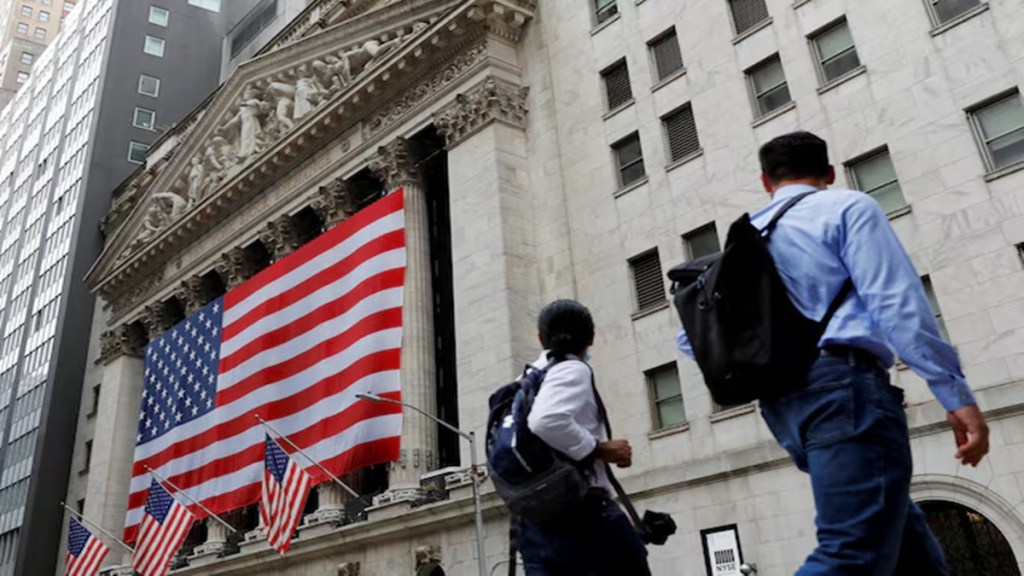The all items index rose 2.7 percent for the 12 months ending June, after rising 2.4 percent over the 12 months ending May. The all items less food and energy index rose 2.9 percent over the last 12 months.
The Consumer Price Index for All Urban Consumers (CPI-U) increased 0.3 percent on a seasonally adjusted basis in June, after rising 0.1 percent in May, the U.S. Bureau of Labor Statistics reported today. Over the last 12 months, the all-items index increased 2.7 percent before seasonal adjustment.
The index for all items less food and energy rose 0.2 percent in June, following a 0.1-percent increase in May.
Core consumer prices in the United States increased 2.90 percent in June of 2025 over the same month in the previous year. Core Inflation Rate in the United States averaged 3.62 percent from 1957 until 2025, reaching an all-time high of 13.60 percent in June of 1980 and a record low of 0 percent in May of 1957.
The annual inflation rate in the US accelerated for the second consecutive month to 2.7% in June 2025, the highest level since February, up from 2.4% in May and in line with expectations.
On a monthly basis, the CPI edged up 0.3%, marking the largest increase in five months and up from 0.1% in May, also matching expectations. The largest upward pressure came from shelter prices, which went up 0.2% while gasoline cost increased 1%.
Meanwhile, core inflation, which excludes volatile food and energy prices, went up to 2.9% following three consecutive months at 2.8% which was the lowest annual rate since 2021, but below forecasts of 3%. Monthly core CPI also rose less than anticipated by 0.2%, compared to forecasts of 0.3% and 0.1% in May.
Since December, the US Fed has suspended rate cuts. Fed chair Powell prefers to play the ‘waiting game,’ despite Trump’s belief that the central bank is already behind schedule in lowering rates.
In an interview with Bloomberg Surveillance on Tuesday, U.S. Treasury Secretary Scott Bessent stated that a “formal process” to find a possible replacement for Federal Reserve Chairman Jerome Powell is already underway. Powell staying at the Fed when his tenure as chair ends would be confusing, Bessent added.
The implementation of tariffs is taking its own sweet time. But, tariff war is far from over. In fact, it appears that it is just getting started.
Powell has repeatedly stated that there won’t be a rate cut until the effect of tariffs is fully seen. The next FOMC meeting is on July 29-30.
Economists and researchers hold varying views on the tariff’s impact on inflation. Goldman Sachs predicts Trump’s tariffs will rekindle inflation to levels not seen since the post-pandemic price increase. Goldman Sachs analysts predict that tariffs will drive annual inflation to 3.8% by December, the highest level since 2023.
U.S. President Donald Trump last week raised tariffs on Canadian imports to 35%, effective Aug. 1, complaining that Ottawa had retaliated with duties against Washington.
President Donald Trump also said that he plans to impose blanket tariffs of 15% or 20% on most trade partners, dismissing concerns that further tariffs could negatively impact the stock market or drive inflation.
The US president announced on Saturday that EU products would face a 30% tariff beginning August 1, dashing European hopes that discussions to negotiate a still harsh 10% duty were nearing completion.
Walmart’s CEO warned that tariffs would compel it to boost prices this year, despite a recent reduction in charges on China. Last quarter, the retail giant stated that it did not know how much tariffs would harm its core business.
While US CPI data is significant, central bankers continue to use the core measurement in the Personal Consumption Expenditures price index, not CPI, as their benchmark.
The June US jobs report was stronger than expected, with unemployment falling to 4.1% and job growth rising to 147,000. However, according to analysts, the job growth was primarily driven by government employment.

